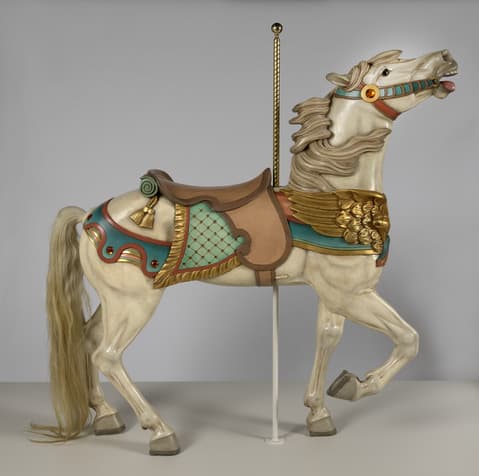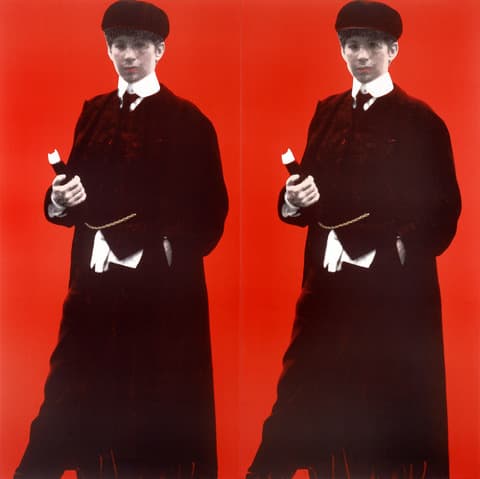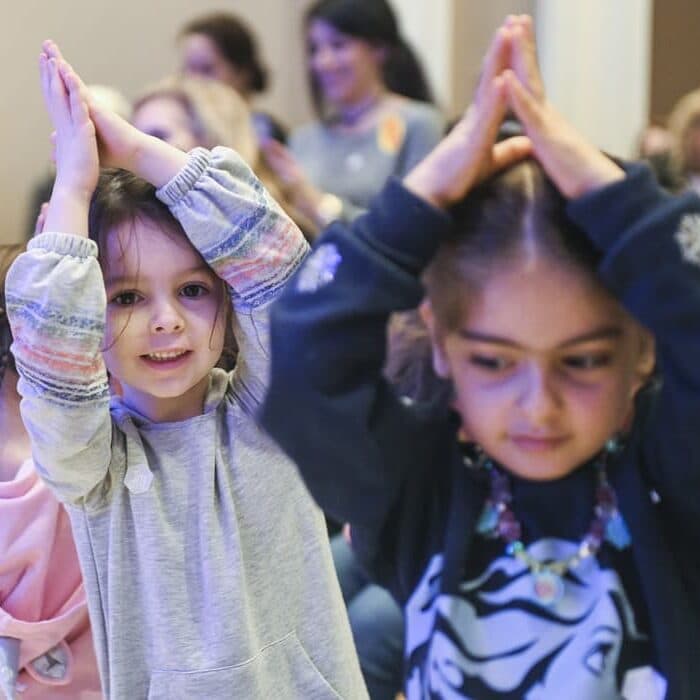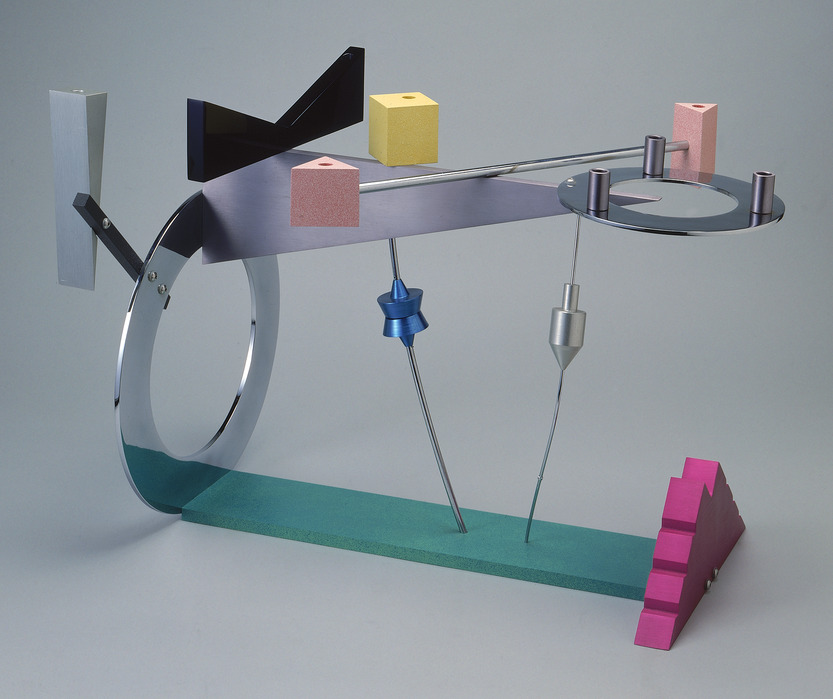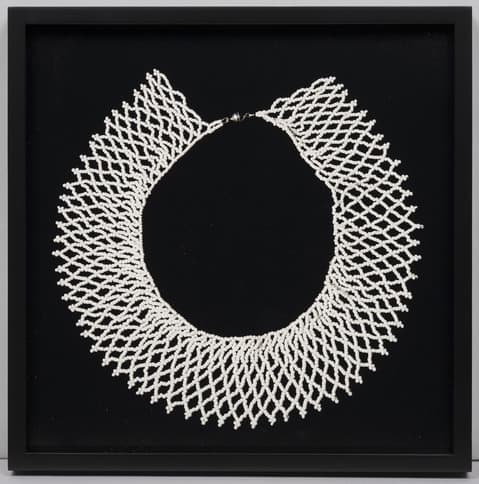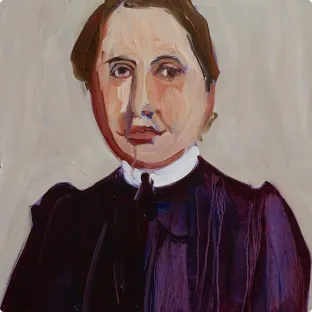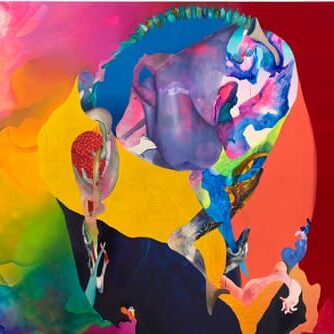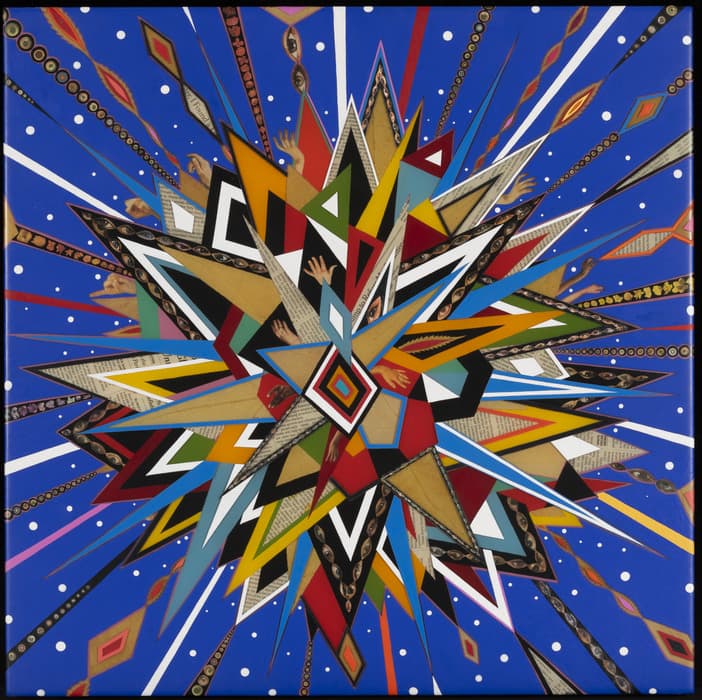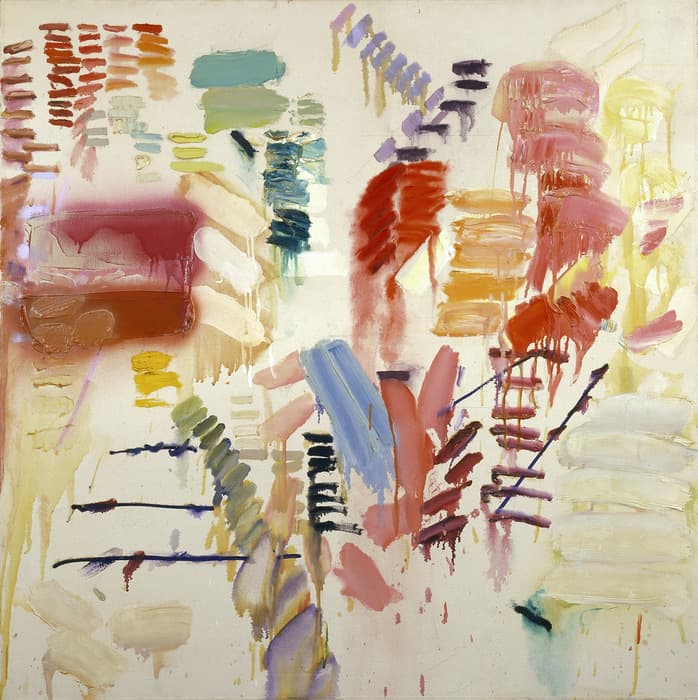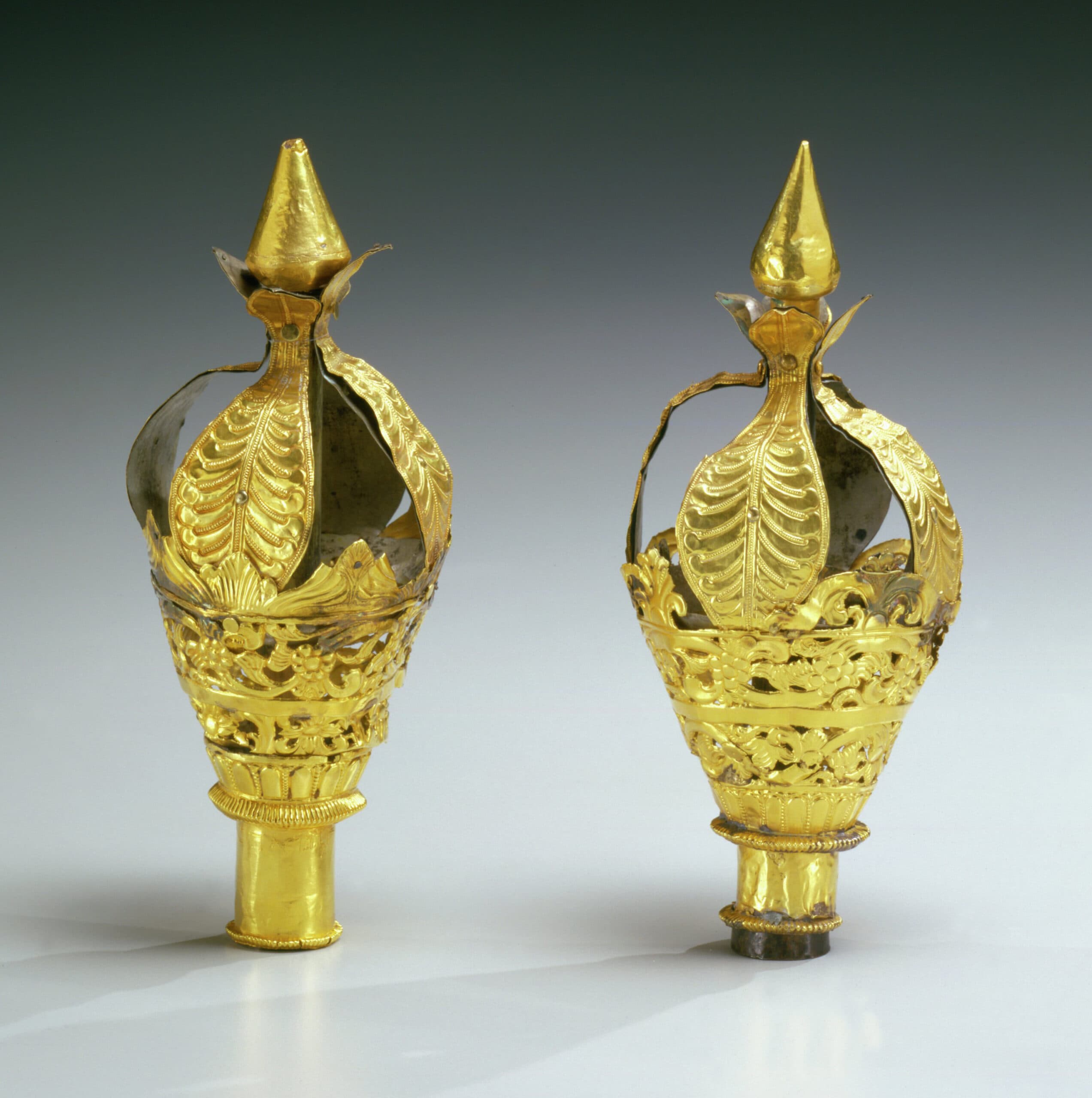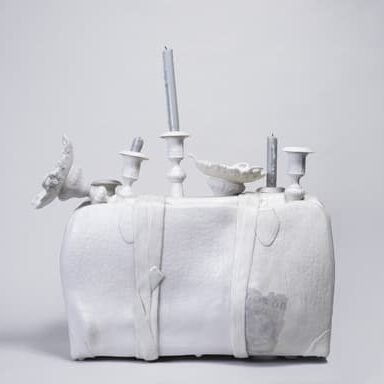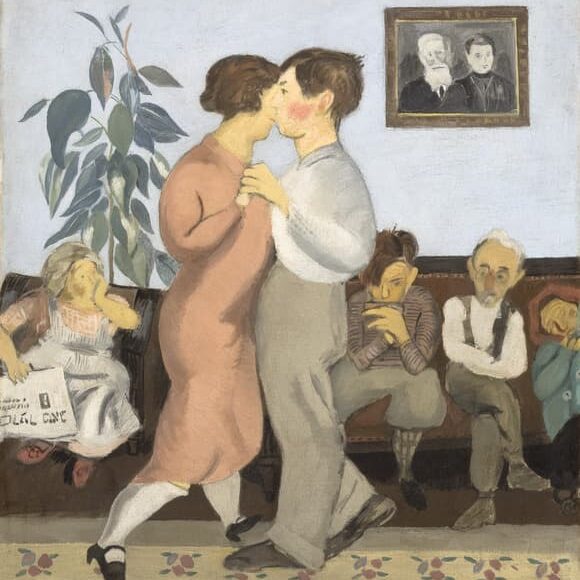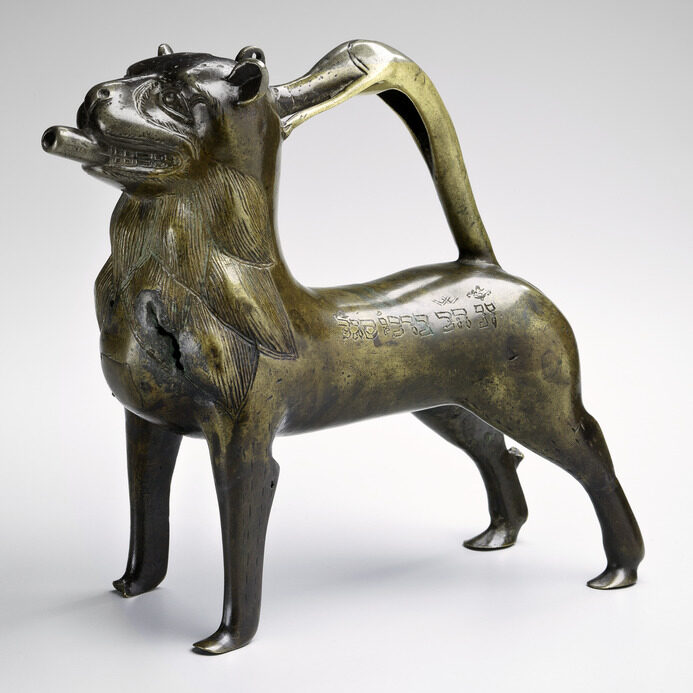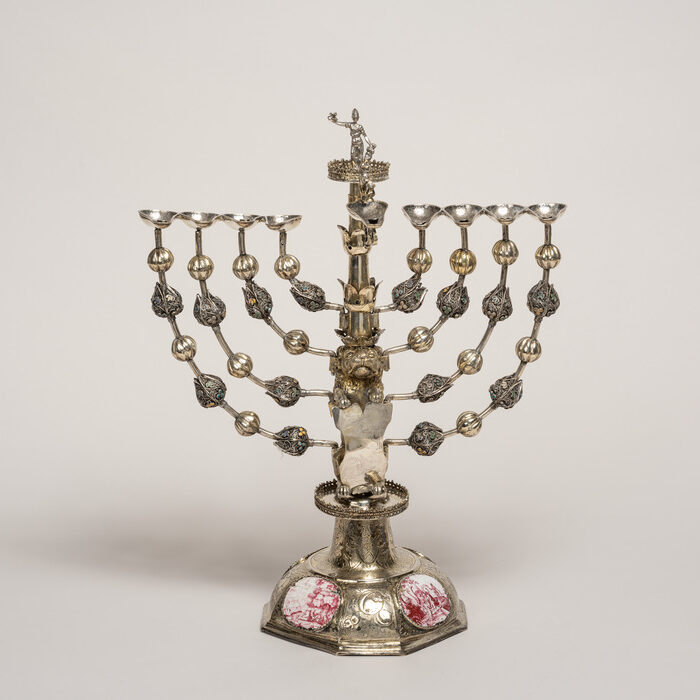Reinventing Ritual: Contemporary Art and Design for Jewish Life
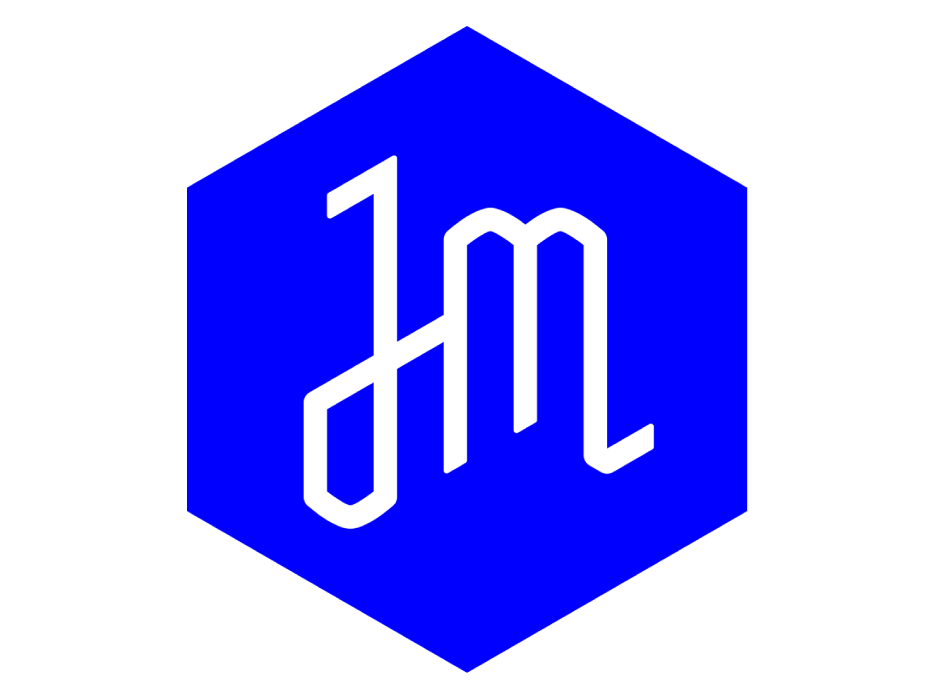
First International Exhibition to Survey Ritual as a Focus of Experimentation in 21st Century Art and Design Opens at The Jewish Museum on Sunday, September 13
New York, NY — Artists and designers’ rising interest in ritual since the 1990s inspires Reinventing Ritual: Contemporary Art and Design for Jewish Life, the first international exhibition to survey this phenomenon. On view at The Jewish Museum from September 13, 2009 through February 7, 2010, Reinventing Ritual features nearly sixty innovative works, created between 1999 and 2009 by leading artists in diverse media. Visitors will see outstanding examples of industrial design, architecture, installation art, video, drawing, metalwork, jewelry, ceramics, comics, sculpture, and textiles, revealing the intersections of creative freedom and Jewish life. A mix of emerging artists and accomplished leaders in the field, most of whom are American and Israeli, with a smaller number of Europeans and South Americans, are represented. Among the 58 artists are Oreet Ashery, Jonathan Adler, Helène Aylon, Deborah Grant, Sigalit Landau, Virgil Marti, Mierle Laderman Ukeles, Karim Rashid, Galya Rosenfeld, Lella Vignelli, and Allan Wexler. All incorporate an active experimentation with contemporary Jewish life and culture into their work. Following its New York City showing, Reinventing Ritual travels to the Contemporary Jewish Museum, San Francisco, where it can be seen from April 22 through September 28, 2010.
In organizing the exhibition, The Jewish Museum’s Henry J. Leir Assistant Curator Daniel Belasco sought artists engaging the tension between the everyday and the sacred. Noticing an explosion of new Jewish rituals, art and objects, Belasco believes the pervasiveness of consumer culture has triggered a search for authentic experience and meaning. Ritual fills this void perfectly with its power to transform daily life and give it meaning. Artists and designers have found the tried and true in ritual to be lacking and ripe for rethinking so that the everyday can be transformed. “The results of the process are hybrid objects that blend the new and traditional, art and craft, sacred and profane, irony and sincerity, offering both artist and viewer an opportunity for contemplation and critique,” writes Belasco in the exhibition catalogue.
The works on view are arranged in four sections: Thinking, Covering, Absorbing, and Building. These categories organize artworks related to specific acts such as eating, drinking, counting, smelling, lighting candles, and praying. A focus on ritual as physical action reconsiders the familiar categories of body, space, and text. Artists, moving beyond identity politics and the culture wars, are grounding their work in things shared by all people, like food, clothes, and the environment, to envision a more sustainable and harmonious future.
Since the 1990s the practice of Judaism has been revolutionized by feminism, environmentalism, multiculturalism and new media. This exhibition features new ritual objects and conceptual art ranging from repurposed seder plates to intricate drawings, gold jewelry to imaginative videos and installations, concrete mezuzahs to a model of an environmentalist synagogue building.
In Writing Lesson #1 (2005), Hadassa Goldvicht uses a ritual from the Israeli Hasidic culture in which she grew up as the basis of her video. When a boy turns three and goes to his first day of school, he licks honey off letters to remind him that learning is sweet. Girls are not traditionally participants in this ritual, so Goldvicht invented her own — showing herself licking the Hebrew alphabet written in honey on a translucent screen. Goldvicht both respects and probes the boundaries of traditional Judaism, refreshing and reinventing an age-old custom.
Recycling and the use of fragments is a thematic thread in the show. Norm Paris created a mezuzah, Rubble Fragment 1 (2007), out of what looks like a rough, old piece of concrete with a frazzled strand of cable attached to its side. The work is meant to invoke the ravages of conflict in the Middle East and throughout Jewish history. Here the material is as important as the form because it suggests construction and collapse. Concrete is made of dust and becomes dust, yet again. “I am not entirely sure whether this object is a protective talisman, a religious reminder or a symbol of territorial struggle,”ù the artist wrote. What he was sure of was his desire to make the piece look recycled, “Rubble Fragment I has been fabricated to look like a remnant from a military-industrial site, retrofitted to become an awkward religious marker.”
Because of its close connection to architecture and reconstruction, the Hanukkah lamp often inspires, and is inspired by, building styles. Hanukkah celebrates the rededication of the Temple in 164 BCE, when the oil in the lampstand miraculously burned for eight days. Jonathan Adler’s Utopia Menorah (2006) references the baroque patterning and flowing lines of 1960s organic modernism, incorporating influences from monumental architecture and home décor.
The bright color and synthetic material of Menorahmorph (2004) are typical of the distinctive work of Karim Rashid. The amoeba-like Hanukkah lamp, with its apparently random arrangement of candleholders, is unusual in allowing the visitor to light the candles in any order.
In Pair of Candlesticks (2007), Lella Vignelli captures the essence of Jewish ritual in the clean, modern shapes and sensuous, pleated surfaces of hand-worked silver. The candles are lit to start the Sabbath and the Jewish holidays at sundown. The tops of the candlesticks are removable, so that they can function as flower vases as well.
Studio Armadillo, the artist team of Hadas Kruk and Anat Stein, created Hevruta-Mituta in 2007. Comprised of thirty-two skullcaps on a white, plastic chess board, this work derives from a conceptual and visual analogy between hevruta (learning in small groups) and chess competitions. The skullcaps, knit by girls during lessons in religious school, are colorful emblems of women’s increasing access to traditionally male-dominated Orthodox Jewish education and ritual.
With Fringed Garment (2005), Rachel Kanter pushes the boundaries of traditional sex roles by combining a kitchen apron and a prayer shawl (until recently worn only by Jewish men) in a more practical form designed for a woman.
Purim falls in the early spring and marks the survival of the Persian Jews from an evil plan for their destruction. It is celebrated by reading the Book of Esther, feasting, exchanging gifts of food, and masquerading. JT Waldman’s commix version combines fin-de-siècle graphic style with midrash (interpretations of the Bible) embedded in the text as marginalia and stories within stories.
Helène Aylon’s sculptural installation, All Rise (2007), presents an equalitarian vision of the future: a courtroom that administers feminist halakha (Jewish law), a fusion once considered improbable.
Allan Wexler’s Gardening Sukkah (2000) invests the temporary sukkah with a year-round function. Not only a booth in which to eat outside during the week-long, harvest holiday of Sukkot, Wexler’s work is also a shed containing gardening implements. On the holiday, the fruit of a year’s labor may be consumed in the sanctuary of the sukkah. This work reconceives the duration of ritual as a more holistic and conscientious process embedded in the natural cycle of food production.
Blog
Exhibition curator Daniel Belasco is contributing to a Reinventing Ritual blog several times a week to address ideas and thoughts related to the exhibition. The blog also includes photos of some of the artists participating in the installation of their works.
Exhibition Catalogue
The 152-page accompanying catalogue, published by The Jewish Museum and Yale University Press, contains 103 illustrations and will be available for $39.95 in the Museum’s Cooper Shop and bookstores everywhere.
Panel Discussion
The Rite Stuff: Design and Modern Observance, a panel discussion about the role of design in modern life, will take place at The Jewish Museum on Thursday, October 22 at 6:30 pm. The panel includes designer Jonathan Adler, artist Allan Wexler, writer and curator Ellen Lupton, and moderator Julie Lasky, editor of Change Observer, who will consider how rites connected with seasonal celebrations, birth, marriage, and death have changed in light of contemporary attitudes toward community, family, and the environment. Panelists will discuss how people are challenged to be both modern and traditional, and what design’s role is in bringing ritual practices up to date. Program tickets are $15 for the general public; $12 for students and seniors; and $10 for Jewish Museum members. Information and program tickets are available at 212.423.3337 or www.thejewishmuseum.org.
Audience Award
In conjunction with the Reinventing Ritual exhibition, The Jewish Museum is presenting its first online audience award for design. Between September 9, 2009 and January 10, 2010, visitors to the exhibition will be invited to choose a favorite from the nearly sixty works on view. Votes for the Reinventing Ritual exhibition audience award may be cast online at www.thejewishmuseum.org/RRAudienceAward. The winning work in the exhibition will be announced on January 11, 2010 with the result posted on the Museum’s web site. Each voter must register with an e-mail address, and only one vote per address will be counted. Each month of the voting, a drawing will be held, and one person will receive a free exhibition catalogue and two admission passes.
The Henry J. Leir Prize
This pioneering exhibition is a major realization of ten years of support from the Leir Charitable Foundations. The Leir initiative has been instrumental in helping to expand the Museum’s program in collecting, exhibiting, and commissioning contemporary art and design about Jewish ritual. One-third of the works in Reinventing Ritual are part of the Museum’s permanent collection. A panel of three judges will award one artist in the exhibition the Leir Prize, representing a culmination of a great vision ““ to show the public the number, range, and quality of artists who are drawn to rejuvenate centuries-old Jewish rituals in bold, experimental ways. The Henry J. Leir Prize will be formally announced at a special event celebrating the opening of the exhibition on Monday evening, September 14, 2009.
Sponsorship
Reinventing Ritual: Contemporary Art and Design for Jewish Life is made possible through the generosity of the Andrea and Charles Bronfman Philanthropies, the Leir Charitable Foundations, and the Joyce and Irving Goldman Family Foundation. Additional support was provided through the Melva Bucksbaum Fund for Contemporary Art and the Office of Cultural Affairs, Consulate General of Israel in New York.
REINVENTING RITUAL: CONTEMPORARY ART AND DESIGN FOR JEWISH LIFE
Artists and Designers Represented in the Exhibition:
Talila Abraham (Israeli, b. 1965)
Jonathan Adler (American, b. 1966)
Cheselyn Amato (American, b. 1958)
Oreet Ashery (British, b. Israel 1966)
Bruria Avidan (Israeli, b. 1966)
Helà¨ne Aylon (American, b. 1931)
Sahar Batsry (Israeli, b. 1974)
Francisca Benitez (Chilean, b. 1974)
Michael Berkowitz (American, b. 1952)
Johanna Bresnick (American, b. 1973) and Michael Cloud (American, b. 1975)
Alexis Canter (American, b. 1981)
Ami Drach (Israeli, b. 1963) and Dov Ganchrow (Israeli, b. United States 1970)
Dov Ganchrow (Israeli, b. United States 1970) and Zivia (Israeli, b. 1960)
Hadassa Goldvicht (Israeli, b. 1981)
Joe Grand (American, b. 1975)
Deborah Grant (Canadian, b. 1968)
Mila Tanya Griebel (British, b. 1963)
Johnathan Hopp (Israeli, b. 1975) and Sarah Auslander (Israeli, b. United States 1973)
Tobi Kahn (American, b. 1952)
Rachel Kanter (American, b. 1970)
Tamara Kostianovsky (Argentinean, b. Israel 1974)
Sigalit Landau (Israeli, b. 1969)
Elan Leor (Israeli, b. United States 1970) and Eran Lederman (Israeli, b. 1970)
LoVid: Tali Hinkis (American, b. Israel 1974) and Kyle Lapidus (American, b. 1975)
Virgil Marti (American, b. 1962)
Matthew McCaslin (American, b. 1957)
Marit Meisler (Israeli, b. 1972)
Alix Mikesell (American, b. 1966)
Rachel Moses (Israeli, b. France 1963)
Norm Paris (American, b. 1978)
Karim Rashid (American, b. Egypt 1960)
Reddish Studio: Naama Steinbock (Israeli, b. 1975) and Idan Friedman (Israeli, b. 1975)
Tracy Rolling (American, b. 1972)
Galya Rosenfeld (Israeli, b. United States 1977)
Ross Barney Architects
Barbara Rushkoff (American, b. 1961)
Anika Smulovitz (American, b. 1974)
Sari Srulovitch (Israeli, b. 1964)
Studio Armadillo: Hadas Kruk (Israeli, b. 1970) and Anat Stein (Israeli, b. 1972)
Liora Taragan (Israel, b. 1974)
Ezri Tarazi (Israeli, b. 1962)
Adam Tihany (Israeli, b. Transylvania 1948)
Suzanne Treister (British, b. 1958)
Mierle Laderman Ukeles (American, b. 1939) and Steven N. Handel (American, b. 1945)
Vignelli Designs: Lella Vignelli (American, b. Italy 1934)
JT Waldman (American, b. 1976)
Tobaron Waxman (Canadian, b. 1970)
Allan Wexler (American, b. 1949)
Martin Wilner (American, b. 1959)
Press contacts
Anne Scher/Alex Wittenberg,
212.423.3271,
[email protected]
